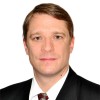The astronaut school inside a Swiss mountain
Deep inside a Swiss mountain, a group of students spent some of the summer simulating what life might be like inside a lunar base. The BBC joined them before the "mission".
What was your childhood dream? For some, it was the idea of becoming an astronaut. There are few dream jobs more challenging to achieve.
"I remember when I was first trying to figure out that I wanted to be an astronaut, thinking, 'How do I do it?'," says Katie Mulry, a 24-year-old American aerospace engineering master's student at the Institut Supérieur de l'Aéronautique et de l'Espace (Isae-Supaero) in Toulouse, France. "I was looking up what university I could go to, what I could study. And really, there's no clear path."
Mulry is also a project leader at Asclepios, the world's first and biggest international student-led space initiative which carries out yearly simulated space missions every year. She was part of the second Asclepios mission in 2021-22 as an "analogue astronaut", carrying out a simulated mission deep inside a Swiss mountain. Since 2024, she helped organise Asclepios V, its fifth mission. It culminated in a "crew" of nine international students spending more than two weeks isolated deep inside the once top-secret Gotthard military fortress in Ticino, Switzerland from the end of July until August this year.
In Greek mythology, Apollo is the god of the Sun, archery, knowledge, prophecy, poetry and music. Legend has it that he would fly across the skies in his horse-drawn golden chariot. This elegant vision inspired Abe Silverstein, director of space flight development at Nasa during the 1960s, to give the name Apollo to the manned space flight programme with the goal of reaching the Moon. "Asclepios is the son of Apollo," Mulry says. "It's kind of like following in the footsteps of the Apollo programme and going back to the Moon."
When I first arrived at the mountain base of Sasso San Gottardo to meet the crew and see where they would be re-creating their rocket launch and lunar base, I couldn't actually find it.
Between the thick fog hanging over us, and the fact that it is hidden underneath the Alps, it was clear why the Swiss government – despite its neutrality policy – built a fortress here during World War Two. Carved into the mountain is a network of 3.5km (2.17 miles) of tunnels that remain at a constant 6C (42.8F) year-round, at an altitude of 2,000m (6,561ft). The fortress still has two cannons, which when in service were capable of hitting targets over 26km (16 miles) away.
The walk along the tunnel from the entrance embedded in the rocky Gotthard Mountain to where I meet Mulry feels endless, like a disorienting dream.
This dark, cold and narrow setting was intentionally chosen to represent a base located inside one of the Moon's "caves" (actually lunar lava tunnels). These have been designed to mimic what human habitation might be like beyond Earth, and to explore how people would behave or react to the extreme conditions of the Moon or Mars, which present complex technological, physical and psychological challenges.
"It's about understanding those challenges and being able to study them here on Earth so that when people go to space, space agencies are more prepared to support astronauts," Mulry explains. "I really love exploring human spaceflights," she tells me. "My goal is to help make life better for people in space, maybe to become someone in space one day."
Asclepios is made up of about 60 people from different countries. It was set up to give students from around the world an idea of what applying to become an astronaut and going to space could be like, emulating the European Space Agency (Esa) and Nasa's........






















 Toi Staff
Toi Staff Gideon Levy
Gideon Levy Tarik Cyril Amar
Tarik Cyril Amar Stefano Lusa
Stefano Lusa Mort Laitner
Mort Laitner Robert Sarner
Robert Sarner Mark Travers Ph.d
Mark Travers Ph.d Andrew Silow-Carroll
Andrew Silow-Carroll Constantin Von Hoffmeister
Constantin Von Hoffmeister Ellen Ginsberg Simon
Ellen Ginsberg Simon
